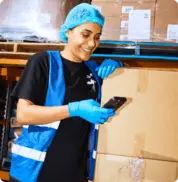A generative AI artist just hit number one on the US country charts, and that’s good news for the future of work.
AI just earned a standing ovation from an unlikely crowd: country music fans.
The number one song on the US country charts right now isn’t from Nashville, or even a real person. It’s from Breaking Rust, an AI-generated artist created by a collective of developers and musicians pushing the boundaries of generative tech. Breaking Rust blends traditional country themes with digital production precision, delivering tracks that are emotionally resonant, if not fully “real” in the human sense. The name is symbolic, a nod to shedding old ways and embracing transformation.
And while this moment might raise eyebrows, it shouldn’t raise alarms. In fact, it might just be the clearest sign yet that AI is finally hitting the right notes: in art, in business and in the workplace.
Music has always been ground zero for cultural paradigm shifts. Think about it: from Elvis shaking up post-war America to hip-hop influencing everything from fashion to film, the evolution of music has mirrored the evolution of society. So when AI enters the stage and tops the charts, it’s not just a novelty. It’s a cultural signal.
The backlash is predictable. Purists are already drawing their lines in the sand. But that too has history. Bob Dylan was booed at the Newport Folk Festival in 1965 for plugging in an electric guitar. They called it sacrilege. Today, it’s considered one of the most iconic moments in music history.
What we’re seeing now with AI is no different. The people panicking about AI replacing humans are like the ones who booed Dylan. They fear change instead of seeing the possibilities. But here’s the truth: when the tools evolve, the music gets louder.
AI is not replacing us. It’s remixing what’s possible
There’s a narrative going around that AI is coming for all our jobs, that it will automate us into redundancy. But Canada’s labour data paints a more complex picture. Employment continues to hold strong, especially among SMBs, who remain the backbone of the workforce. Instead of wiping out roles, AI is creating new categories of work that blend technical skill with human insight.
Across the country, we’re seeing growth in sectors like tech, logistics and creative services, all increasingly supported by AI-enhanced workflows. The trend isn’t replacement. It’s augmentation. People are using AI to streamline admin, speed up analysis and open up time for higher-value tasks. It’s less about removing people and more about removing friction.
AI can crunch data, optimize rosters, draft emails, even co-produce a melody. But it still can’t feel the weight of a lyric. It can’t live a story. That’s where humans will always have the edge. The businesses that get this, that use AI to free up people for more meaningful work, are the ones writing the future.
Music shows us where culture is heading
If music is the canary in the coal mine for societal change, then this moment matters. It tells us that people are increasingly open to co-creation with machines. Not as a threat to human creativity, but as an amplifier of it. We don’t need to fear that AI can make art. We need to celebrate that it can make space for more of it.
The same is true for work. Admin-heavy jobs that eat up hours are the equivalent of background noise. AI can turn them down so we can focus on the solos. On the strategic, interpersonal, and inventive stuff that people do best.
This isn’t about less work. It’s about better work. More value. Less grind. Just like ProTools didn’t kill the music producer, AI isn’t killing the worker. It’s just changing the way we create.
So, what does this mean for SMBs?
It means now is the time to start thinking like a bandleader, not a bouncer. Don’t gatekeep your old processes. Open the stage. Let your teams experiment with AI tools that can enhance their output and cut their admin time. Give them the freedom to try, to fail, to remix their workflow.
The future of work is not man or machine. It’s man and machine, working in harmony—just like Dylan with a Stratocaster. Just like an AI songwriter topping the charts with a human audience clapping along. AI isn’t a substitute; it’s a collaborator.
Change is hard. But it’s also where the magic lives. If music history has taught us anything, it’s that every new instrument brings new energy. This moment is no different. We’re watching a cultural remix happen in real time. And it’s not the death of authenticity. It’s a celebration of progress.
So next time you hear an AI-generated track, don’t ask, “Is this real?” Ask instead: “What can this unlock for us?” Because when the charts change, the culture follows. And for businesses, that means a new rhythm of work is coming. You just have to be ready to dance to it.





















